#western systems and structures impact on aboriginal and torres strait islander cultures
Explore tagged Tumblr posts
Text
How do western systems and structures impact on aboriginal and torres strait islander cultures? Read this article for detailed guide.
0 notes
Link
Nowadays, the Aboriginals of Australian and Torres Strait Islander people and the organization critically operate under two different systems of laws. Appeals, audit procedures, and complaints like procedures should be followed and about the election process, a grievance, or conflict of interest.
0 notes
Text
Day 10: Indigenous People’s Past, Present, & Future
“We would like to acknowledge the Ngunnawal people who are the traditional custodians of this land on which we are meeting and pay respect to the Elders of the Ngunnawal Nation both past and present. I extend this respect to all Aboriginal and Torres Strait Islander peoples in attendance today. This welcome shows respect for the traditional custodians of the Canberra region where we spent the morning at the Australian Institute of Aboriginal and Torres Strait Islander Studies.” Michelle Deshong, CEO of the Australian Indigenous Governance Institute, welcomed our class in the traditional way this morning prior to the start of our session.
Ms. Deshong gave us an overview of the diversity of the First Nations of Australia. Before colonization, there were 250 tribal nations. Unfortunately, due to past policies separating Aboriginal children from their families, known as the stolen generation, we are unsure of how many nations remain.
The parallels between our two countries regarding the interactions between westerners and indigenous people are uncannily interchangeable. One notable difference between Native Australians and Native Americans is that the former never utilized treaties to enable their peoples. This lack of empowerment is a primary factor driving their efforts towards nation building: two equal entities having conversations about their best outcomes.
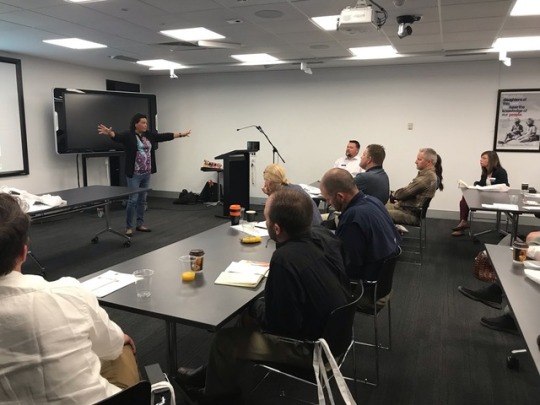
Aboriginals practice a clan-based linear family and governance structure, which is very different than western hierarchical society. While this is foreign to our way of thought, Ms. Deshong encouraged us to “de-colonize” our minds to understand their cultural values and beliefs. From the outside this system may look disorganized, but when you take a step back, you begin to understand the origin of the phrase “it takes a village.”
Ms. Deshong went on to explain how current generations are affected by the decisions of the five generations before us. Therefore, it is important for our generation to consider the next five generations. When you lose these cross generational connections you lose knowledge.
We then took a tour of the Institute where they are archiving thousands of hours of film, audio recordings and pages of documents and books to preserve aboriginal culture. They are also working on developing aboriginal genealogies to help the stolen generation discover their history.
We ended with Ms. Deshong discussing the path towards sovereignty for the first nations of Australia. This means Aboriginals acting as nations by making a decision today, that will impact the next five generations.
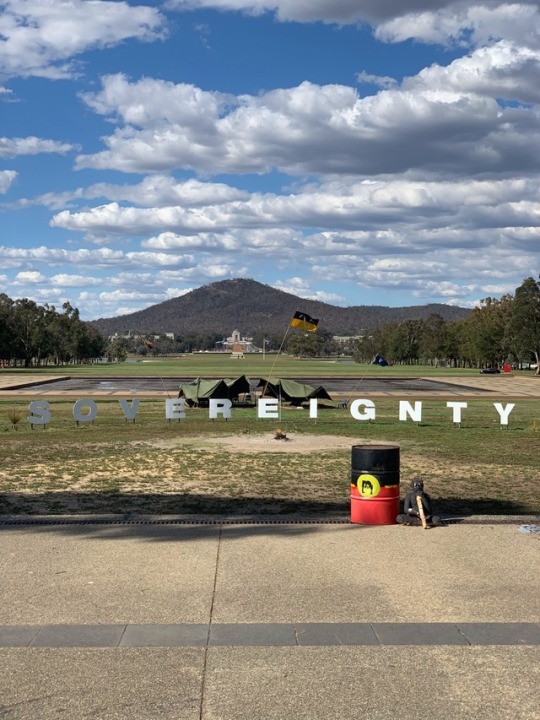
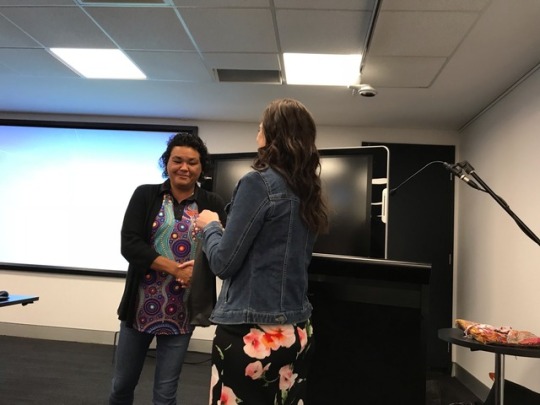
After this session, the fellows went out to explore Canberra. Some went to the National Portrait Gallery, the National Museum of Australia, Parliament, bike riding, and hiking Mount Ainslie.
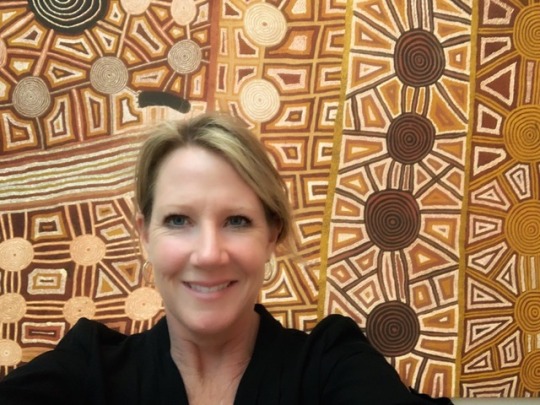
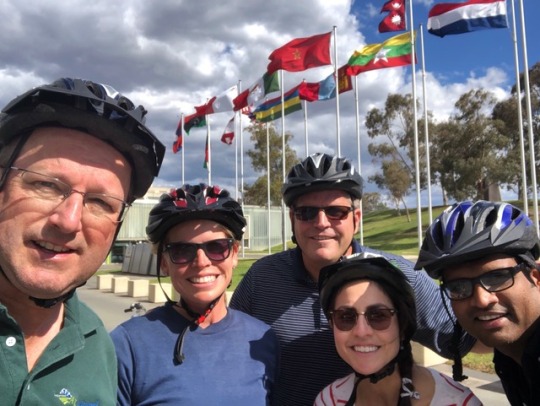

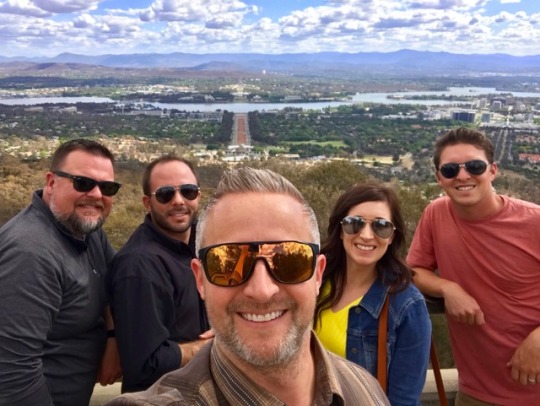

“True leadership is only possible when character is more important than authority.” Joseph M. Marshall III, Brule Lakota Sioux Tribe
-Paul Crout, Lauren Hajik, Jazmin Lopez and Alejandra Navarrete
2 notes
·
View notes
Link
0 notes
Text
Impact of Western Systems and Structures on Aboriginal and Torres Strait Islander Cultures
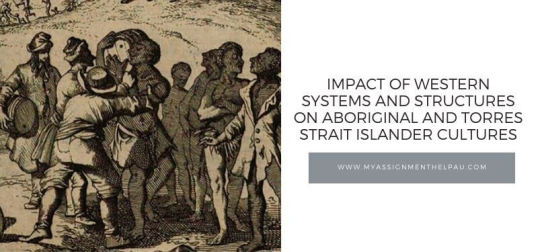
When it comes to Australian aboriginal, they are actually formed by an indigenous group of people that belongs to the Australian mainland and different islands which includes Fraser Island, Tiwi Islands, Groute, Hinchinbrook Island, but it do not has Torres Strait Island in its map.
Visit: https://www.myassignmenthelpau.com/blog/impact-of-western-systems-and-structures-on-aboriginal-and-torres-strait-islander-cultures
0 notes
Text
Discussions have begun between the South Australian government and three Indigenous nations aimed at finalising a treaty.
These negotiations follow recent developments toward treaties between Indigenous and non-Indigenous Australians across the country. These are significant steps. They offer the potential to revitalise – but also overtake – a flagging process to recognise the First Australians in the Constitution.
Treaties are accepted globally as the means of reaching a settlement between Indigenous peoples and those who have colonised their lands. They are formal agreements, reached via respectful negotiation in which both sides accept a series of responsibilities.
Treaties acknowledge Indigenous peoples were prior owners and occupiers of the land and, as such, retain a right to self-government. At a minimum, they recognise or establish structures of culturally appropriate governance and means of decision-making and control.
Treaties have been achieved in the US and Aotearoa/New Zealand, and are still being negotiated in Canada. In contrast, no treaty between Indigenous and non-Indigenous Australians has ever been recognised. Recent developments suggest this may change soon.
Treaty processes at the state level
The South Australian government has set aside A$4.4 million over five years for a treaty process that is seen as a “crucial step” in a process of reconciliation. Discussions will be open-ended, with no presumed outcome or form. But it is assumed the consequences of settlement will be considered.
In February, the Victorian government announced its commitment to negotiate a treaty with the 39 Indigenous nations that reside within the state. Consultative forums have been held in Melbourne and across regional Victoria. An Aboriginal Treaty Interim Working Group is currently planning “the next steps in a treaty-making process”.
Moves are also afoot in the Northern Territory. In September, incoming chief minister Michael Gunner declared his government would establish a subcommittee on Aboriginal affairs to drive public discussions on a treaty between the NT and Indigenous nations.
This is not just the province of Labor governments. In Western Australia, the Liberal government signed the largest and most-comprehensive agreement to settle Aboriginal interests in land in Australian history with the Noongar people in 2015.
The agreement involves 30,000 Noongar people and covers around 200,000 km². The total value of the package is about $1.3 billion, and includes agreement on rights, obligations and opportunities relating to land, resources, governance, finance and cultural heritage. In exchange for this package, the Noongar people have agreed to surrender all current and future claims relating to historical and contemporary dispossession.
Although this agreement was conducted under the framework of the Native Title Act rather than a specific treaty process, its size and scope have raised treaty comparisons. Deputy WA Opposition Leader Robin Cook has said:
By its very nature, the Noongar agreement is in fact a classic treaty.
It is still too early to say whether the treaty processes at the state level will be successful. It is also unclear whether state and territory governments are interested in recognising Indigenous self-governance. Simply calling an agreement a “treaty” will not make it so.
Nonetheless, these moves are encouraging. If delivered, treaties offer the potential of meaningful reform, overtaking a stalled constitutional recognition process.
Constitutional recognition has stalled
It has been six years since the Expert Panel on Constitutional Recognition of Indigenous Australians was established. Yet federal government ambivalence over a preferred model, and difficulties involved in achieving a successful referendum, mean the process has gone nowhere.
Despite several parliamentary and expert reports, no government has ever committed to a model. The panel’s final report did not even receive a formal response from the government.
In 2015, the Parliamentary Joint Committee on Constitutional Recognition of Aboriginal and Torres Strait Islander peoples achieved a similar result. Three weeks after delivering the report, the committee’s chair, Ken Wyatt, acknowledged conservatives within his party would not accept its recommendations.
In December 2015, another body, the Referendum Council, was established to advise on progress toward a referendum. It is currently consulting with Indigenous Australians to hear their views on reform and plans to deliver a report in mid-2017. It is by no means certain that the government will seriously engage with this latest report.
Government inaction has pushed out the referendum timeframe. Once tentatively scheduled for 2013, any vote is now unlikely to occur before 2018. And just what Australians will be asked to vote on remains unclear.
In essence, the problem with constitutional recognition is a disconnect between the federal government and Indigenous aspirations. While the government gently pushes for symbolic acknowledgement and minor constitutional tinkering, Indigenous people want more. They want meaningful reform that will impact their daily lives. This is why they are attracted to the promise of treaties.
Treaties and constitutional recognition
The treaty processes at state level have important consequences for the national debate on constitutional recognition.
First, if they are effective – and deliver meaningful change – they can provide the basis for further treaties with Indigenous peoples across the country.
Second, in negotiating with Indigenous peoples and reaching an agreement based on terms acceptable to both parties, these treaties will mark an important shift in attitude. They could represent a break from a system that for many years has disregarded the views of Indigenous Australians and reinforced their feelings of powerlessness.
Finally, these developments can revitalise the constitutional recognition process by delivering meaningful change to Indigenous Australians, and demonstrating such change is not radical. Politicians should recognise this, and listen to what Indigenous Australians want.
0 notes
Text
Impact of Western Systems and Structures on Aboriginal and Torres Strait Islander Cultures

When it comes to Australian aboriginal, they are actually formed by an indigenous group of people that belongs to the Australian mainland and different islands which includes Fraser Island, Tiwi Islands, Groute, Hinchinbrook Island, but it do not has Torres Strait Island in its map. Visit:
https://www.myassignmenthelpau.com/blog/impact-of-western-systems-and-structures-on-aboriginal-and-torres-strait-islander-cultures
0 notes